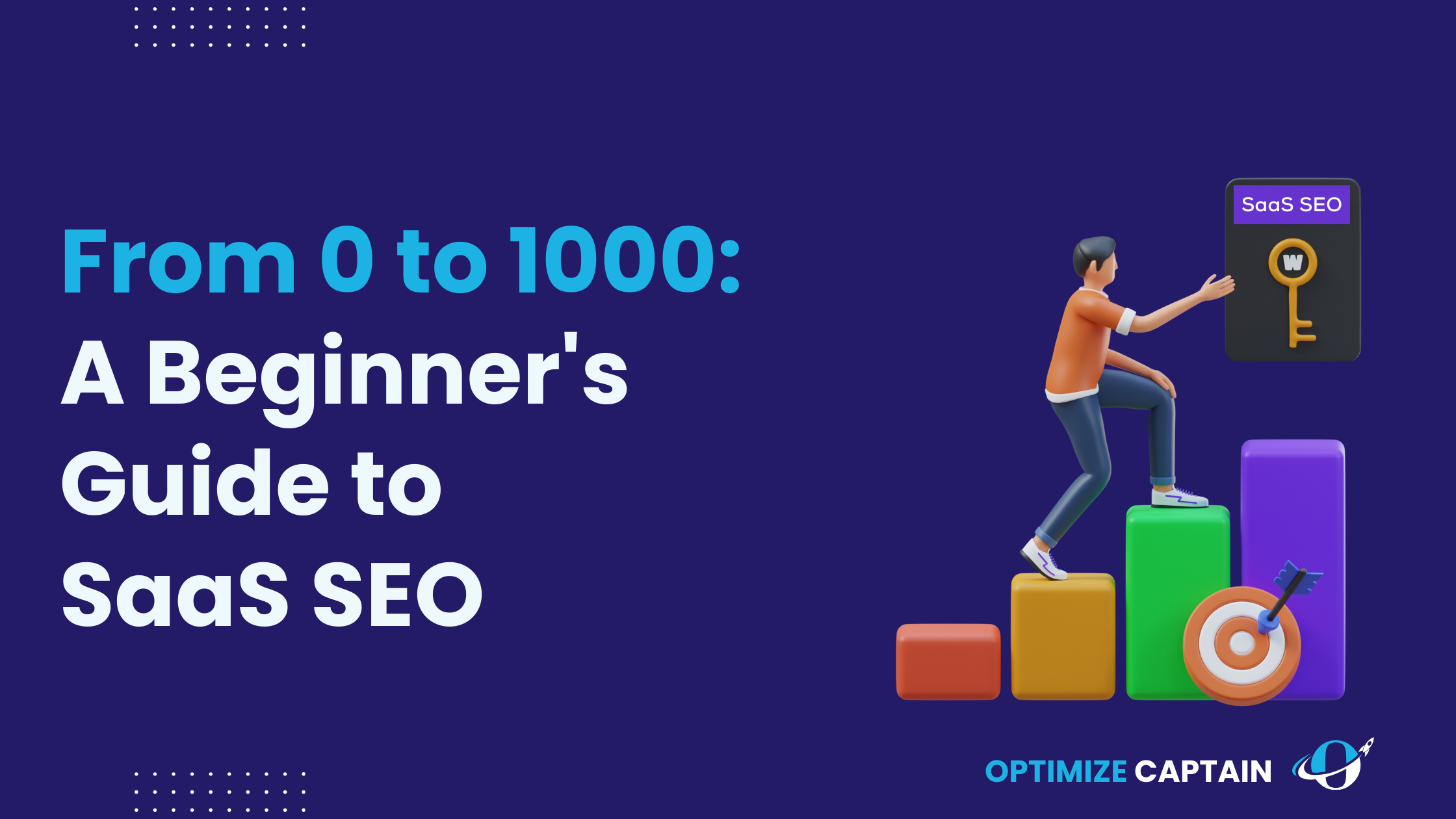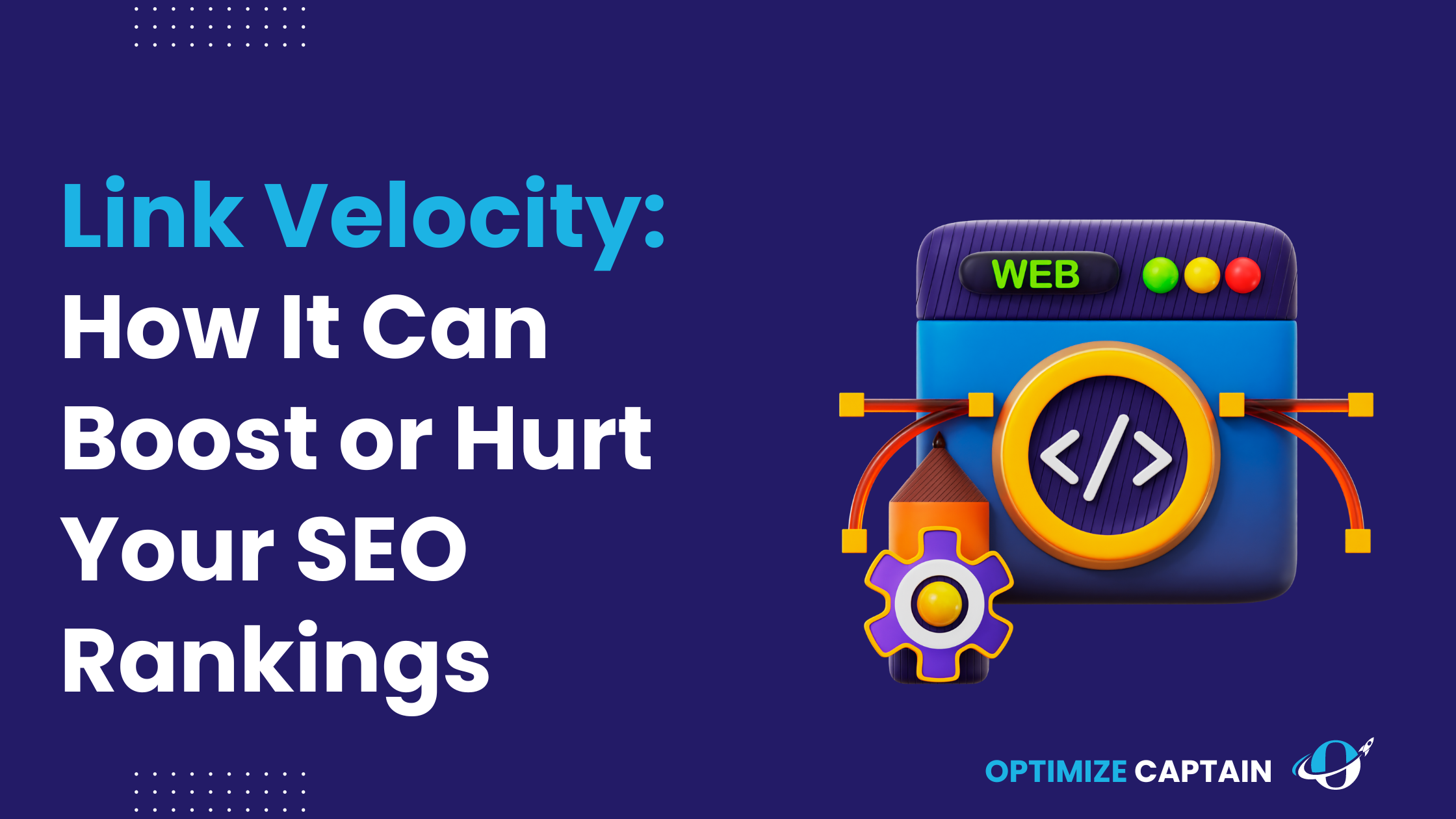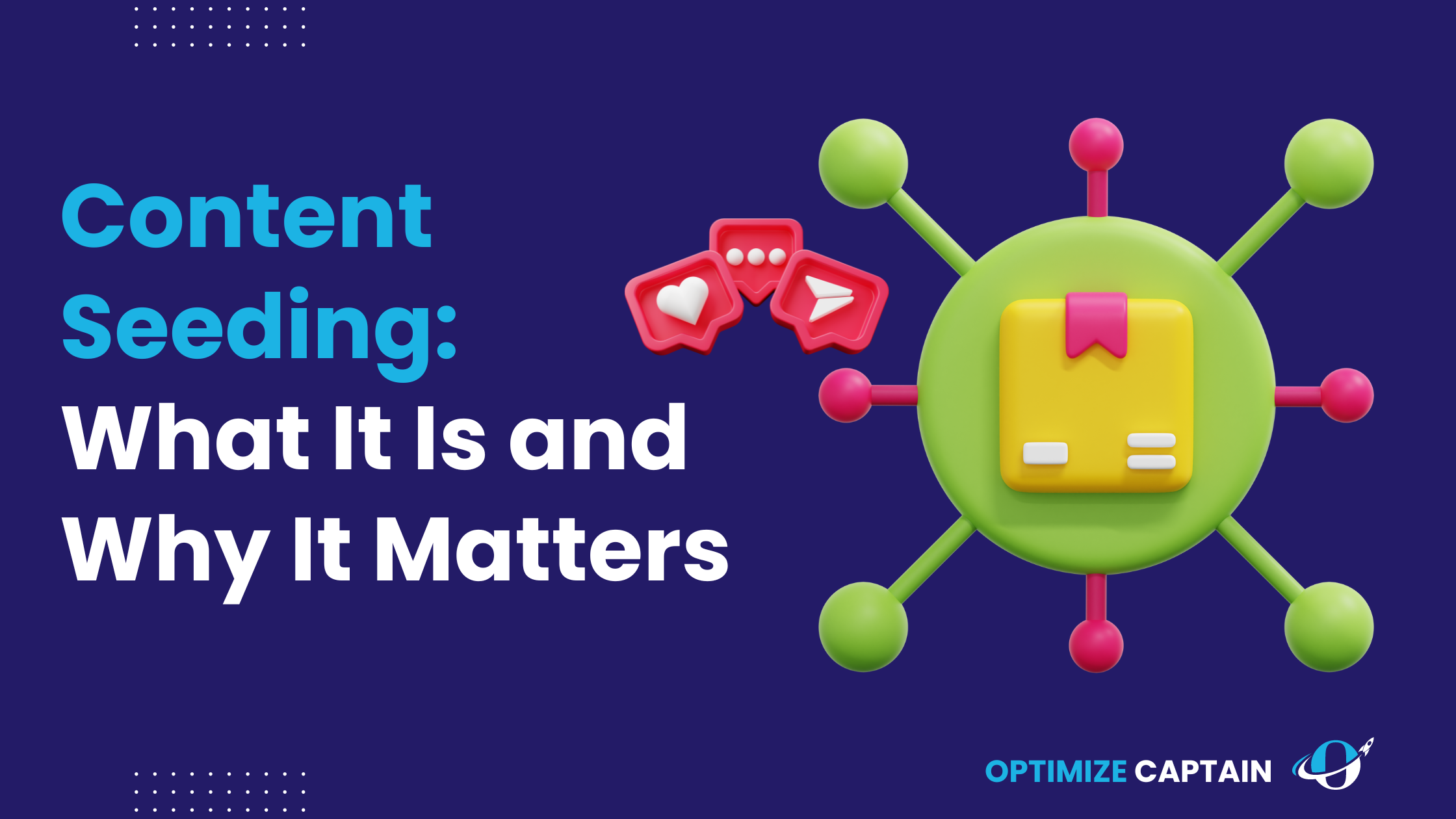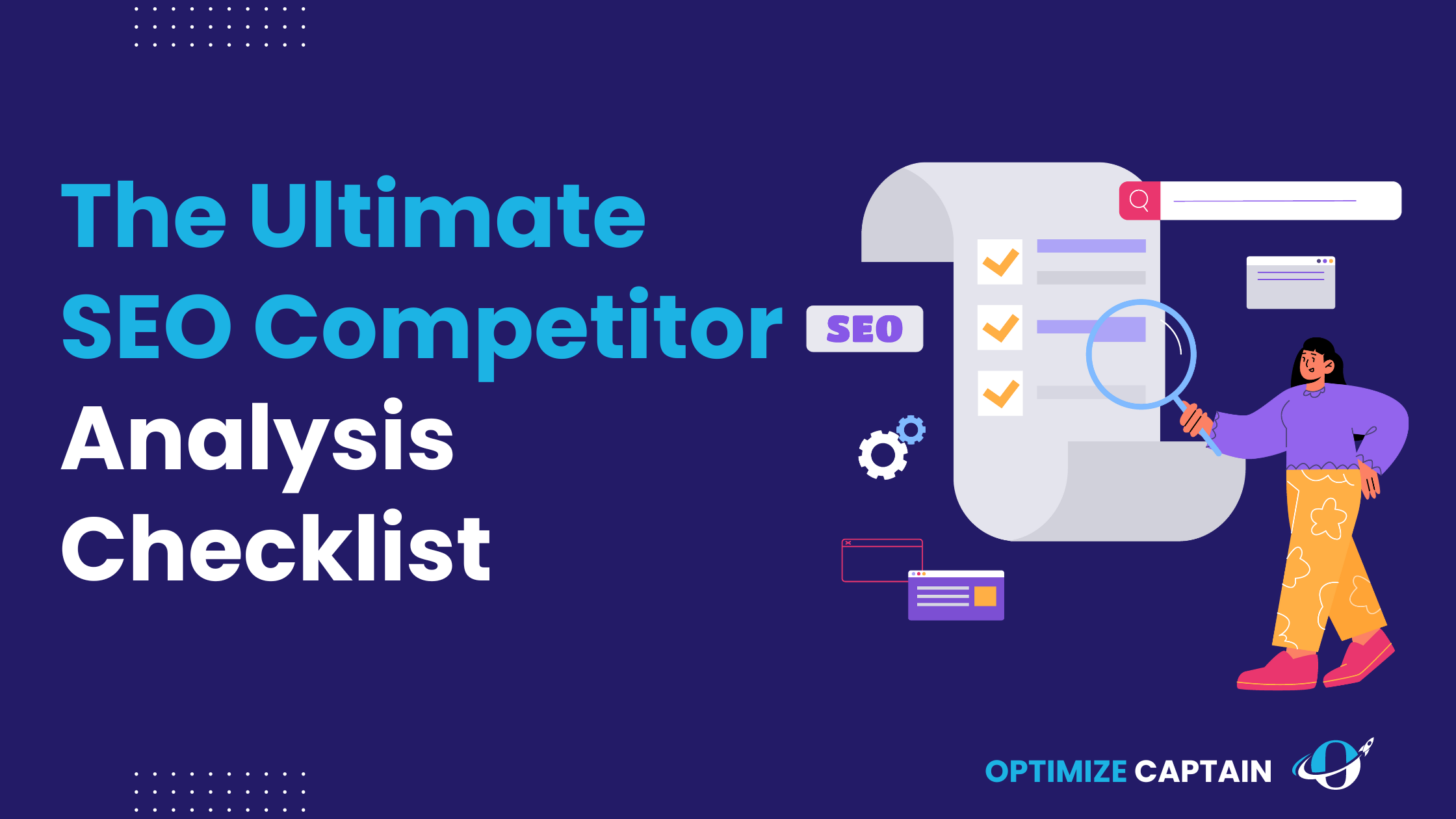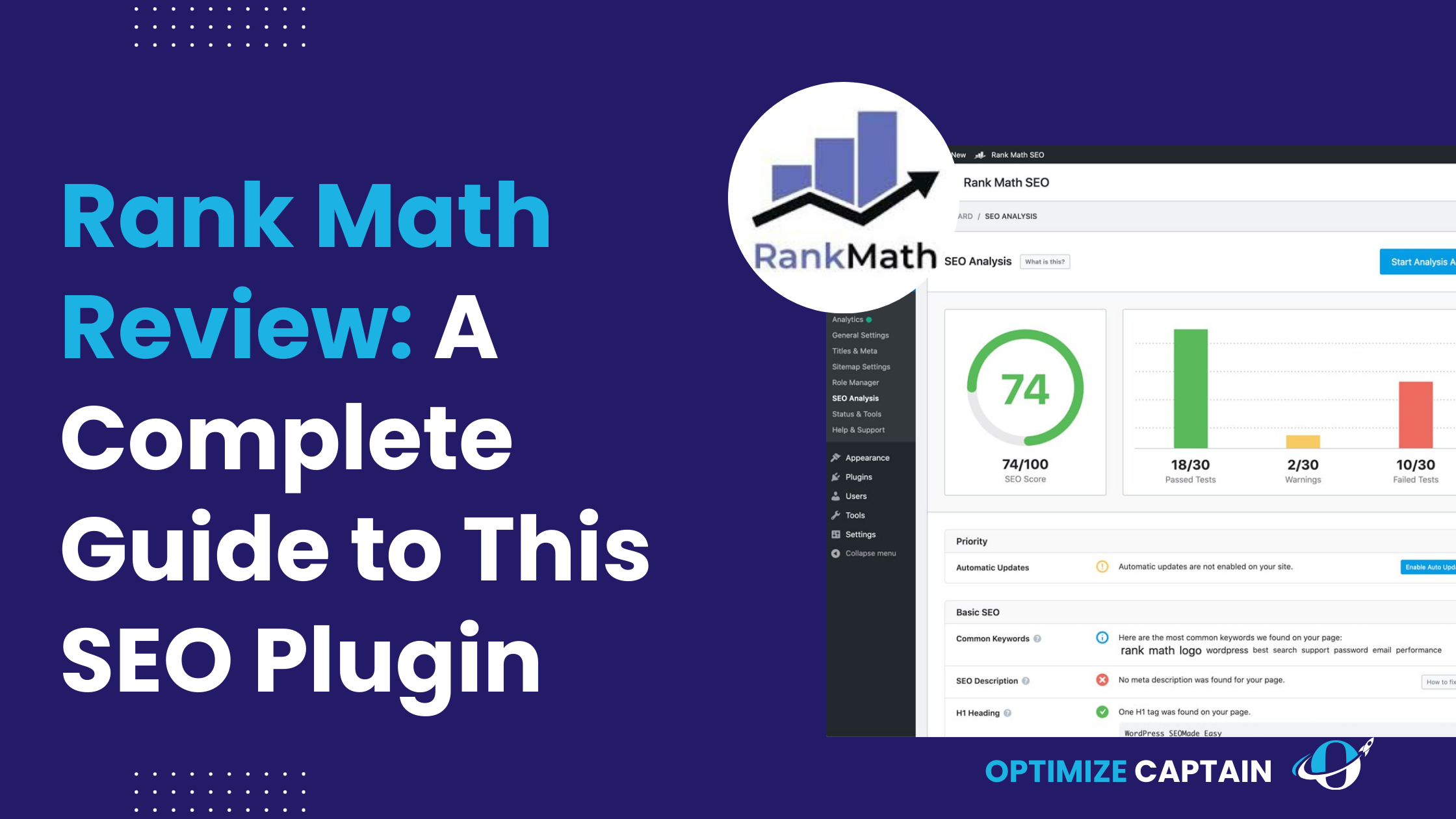Did you know 93% of online experiences begin with a search engine?
Mastering SaaS SEO isn’t just an option for SaaS companies—it’s a necessity. SEO can boost your visibility, drive organic traffic, and increase conversions.
This detailed guide will walk you through the essential steps to rank your SaaS brand effectively, taking you from zero to a thousand in no time. Whether new to SEO or looking to refine your strategies, this guide will provide the insights and tools needed to achieve top search engine rankings and grow your business.
What is SEO and Its Relevance to SaaS
SEO, or search engine optimization, enhances your website’s visibility on search engines for relevant searches. For SaaS companies, SEO is more than just attracting visitors; it’s about drawing in exemplary visitors—those likely to convert into paying customers. By optimizing your site for search engines, you ensure that when potential customers search for solutions your software offers, your site appears prominently in the results.
How is SaaS SEO Different?
SaaS SEO differs significantly from SEO for other industries due to the unique nature of the SaaS business model. Here are vital aspects where it stands apart:
- Target Audience and Keywords: SaaS companies often cater to niche markets with specific needs. For instance, a project management SaaS tool will target different keywords than an e-commerce store. High-intent keywords such as “best project management software for remote teams” attract potential customers who are further along in their buying journey.
- Sales Cycle: The sales cycle in SaaS is usually longer and involves more decision-making stages. Customers must understand the product, see demonstrations, and often try it out before committing. SEO content for SaaS needs to nurture leads through the funnel, with content ranging from informational blog posts to detailed product comparisons and case studies.
- Content Strategy: Educational content is crucial in SaaS SEO. SaaS companies must produce in-depth guides, tutorials, and webinars that explain their product’s benefits and use cases. For example, a CRM SaaS might create blog posts on “How to Improve Customer Retention Using CRM Software” to attract and educate potential customers.
- Retention and Upselling: SaaS businesses thrive on customer retention and upselling unlike many other industries. SaaS SEO efforts often extend beyond acquisition to include content that helps retain customers and introduces them to advanced features or new products. Creating content like “Advanced Tips for Using [Your SaaS Product]” can help.
The Role of Organic Traffic in SaaS Growth
Organic traffic is important for SaaS growth for several reasons:
- Cost-Effective: Unlike paid advertising, organic traffic does not incur direct costs per click or impression. Once your content ranks well, it can continue to attract visitors without ongoing expenses.
- High-Quality Leads: Visitors who find your SaaS product through organic search are often actively looking for solutions, making them high-quality leads. For example, someone searching for “best time tracking software” is likely in the market for a tool like yours.
- Building Trust and Authority: Ranking high in search results helps build credibility and authority in your industry. For instance, if your cybersecurity SaaS frequently appears in search results for “how to protect against data breaches,” it positions your brand as a trusted resource.
- Sustainable Growth: Organic traffic provides a steady and sustainable source of visitors. Unlike paid campaigns, which need constant funding, SEO investments compound over time, leading to ongoing traffic and growth.
Keyword Research for SaaS SEO
Keyword research is the foundation of a successful SaaS SEO strategy. To rank your SaaS brand effectively, you need to target the right keywords at each stage of the funnel. Here’s how you can do it:
Understanding the Funnel Stages
To conduct keyword research effectively, understand the different stages of the buyer’s journey:
- Awareness Stage: Potential customers realize they have a problem.
- Consideration Stage: They start looking for solutions.
- Decision Stage: They choose a solution.
Awareness Stage Keywords
In the awareness stage, focus on broad keywords addressing common pain points and questions. Use tools like Google Keyword Planner, SEMrush, Ahrefs, and Answer the Public to find these keywords.
Examples:
- “What is SaaS?”
- “Benefits of SaaS solutions”
Consideration Stage Keywords
In the consideration stage, target specific keywords showing how your SaaS product addresses needs. Use analysis tools like Ahrefs and Moz to see what keywords your competitors rank for.
Examples:
- “Best SaaS solutions for accounting”
- “Top SaaS tools for customer support”
Decision Stage Keywords
In the decision stage, focus on conversion by highlighting your SaaS product’s unique features and benefits. Use tools like Long Tail Pro to find these high-intent keywords.
Examples:
- “Buy [Your SaaS Product]”
- “[Your SaaS Product] pricing”
Tools for Keyword Research
- Google Keyword Planner: Provides keyword ideas and search volume data.
- SEMrush: Offers comprehensive keyword research and competitive analysis.
- Ahrefs: Great for competitor analysis and identifying keyword opportunities.
- Answer the Public: Visualizes questions people are asking around your keywords.
On-Page SEO Optimization for SaaS SEO
On-page SEO optimization involves optimizing your web pages’ content and HTML source code. Here’s how you can do it effectively:
Crafting High-Quality Content
Content is the backbone of on-page SEO. Ensure your content is valuable, relevant, and optimized.
Tips:
- Solve Problems: Address the pain points of your target audience.
- Be Original: Offer unique insights and avoid duplicating content.
- Use Visuals: Incorporate images, infographics, and videos to make the content more engaging.
- Update Regularly: Keep your content current and relevant.
Using Keywords Naturally
Incorporate keywords naturally to avoid keyword stuffing. Place keywords in title tags, headings, body, URL, and meta descriptions.
Optimizing Title Tags and Meta Descriptions
Ensure title tags and meta descriptions are compelling and accurately describe the page content. Keep title tags under 60 characters and meta descriptions between 150-160 characters.
Structuring with Header Tags
Use header tags (H1, H2, H3) to structure your content, making it easier for search engines and users to understand.
Enhancing User Experience (UX)
A positive user experience can improve SEO. Ensure your site is mobile-friendly, has fast loading times, clear navigation, and engaging CTAs.
Optimizing Images and Multimedia
Optimize images and multimedia elements for SEO. Include descriptive alt text with keywords, use keyword-rich file names, compress images, and provide transcripts for video content.
Internal Linking
Internal links help distribute link equity and improve navigation. Use relevant links and descriptive anchor text.
Optimizing for Mobile
Ensure your site is responsive and mobile-friendly. Optimize for fast loading times on mobile devices.
Off-Page SEO Strategies for SaaS SEO
Off-page SEO involves activities outside your website that impact your rankings on search engine result pages (SERPs). Here’s how to build a solid off-page SEO strategy:
Link Building
Link building is about acquiring high-quality backlinks from reputable sites.
Strategies:
- Guest Blogging: Write valuable content for other sites in your industry with links back to your site.
- Content Promotion: Share your high-quality content with relevant audiences to attract links.
- Outreach: Reach out to industry influencers and bloggers to request backlinks.
- Broken Link Building: Find broken links on other sites and offer your content as a replacement.
- Skyscraper Technique: Find high-performing content, create something better, and contact those who linked to the original.
Social Media Marketing
Social media can significantly impact SEO by increasing brand awareness, driving traffic, and generating backlinks. Share your content across all relevant platforms, engage with your audience, and collaborate with influencers.
Brand Mentions
Gaining recognition through mentions on other sites, even without direct links, can enhance your SEO.
Influencer Outreach
Partner with key figures in your industry to promote your content and brand.
Online Communities and Forums
Participate in online communities and forums to drive traffic and increase your authority. Provide value by offering helpful advice and linking to your content when relevant.
Technical SEO Optimization for SaaS SEO
Technical SEO ensures your website is optimized for search engines to crawl and index your pages efficiently. Here’s how to optimize the technical aspects of your site:
Improve Site Speed
Site speed is crucial for user experience and SEO. Optimize images, leverage browser caching, minimize HTTP requests, and use a content delivery network (CDN).
Ensure Mobile-Friendliness
With most searches happening on mobile devices, having a mobile-friendly site is non-negotiable.
Optimize Site Architecture
A well-structured site makes it easier for search engines to crawl and index your content. Use a clear hierarchy, implement breadcrumbs, create an XML sitemap, and optimize URL structure.
Enhance Crawlability and Indexability
To ensure search engines can easily crawl and index your site, use a robots.txt file, canonical tags, and structured data markup.
Fix Broken Links and Errors
Regularly check for broken links and fix them. Set up 301 redirects for any removed or moved pages.
Implement HTTPS
HTTPS ensures a secure connection, which is important for user trust and SEO.
Optimize for Core Web Vitals
Core Web Vitals measure user experience, including loading, interactivity, and visual stability. Improve server response times, minimize JavaScript, and optimize CSS.
Link Building for SaaS SEO
Link building is a crucial aspect of off-page SEO that involves acquiring hyperlinks from other websites to your own. These links act as votes of confidence, signalling to search engines that your content is valuable and trustworthy. Effective link-building can significantly enhance your SaaS brand’s authority and search engine rankings. Here’s how to master link building for your SaaS brand.
Understanding Link Building
Link building is about creating a network of inbound links from reputable websites to yours. The quality and relevance of these links are more important than the quantity.
Key Factors:
- Authority: Links from high-authority sites carry more weight.
- Relevance: Links should come from sites related to your industry or niche.
- Diversity: A diverse link profile with different types of links is beneficial.
- Anchor Text: The clickable text of a link should be relevant and descriptive.
1. Creating Link-Worthy Content
The foundation of successful link-building is creating content that others want to link to.
Types of Link-Worthy Content:
- Original Research: Data-driven studies and reports.
- Infographics: Visual representations of data that are easy to share.
- Comprehensive Guides: In-depth articles that provide significant value.
- Interactive Tools: Calculators, quizzes, and other tools that engage users.
Promotion Tips:
- Outreach: Reach out to industry influencers and bloggers to share your content.
- Social Media: Promote your content on social platforms to increase visibility.
- Email Marketing: Send your content to your subscribers and ask them to share it.
2. Guest Blogging
Guest blogging involves writing articles for other websites in your industry. In return, you get a backlink to your site.
Steps to Successful Guest Blogging:
- Identify Targets: Find reputable sites in your industry that accept guest posts.
- Pitch Ideas: Propose topics relevant to the host site’s audience.
- Write High-Quality Content: Provide valuable, well-researched content.
- Include Links: Naturally include links to your site within the content or author bio.
3. Broken Link Building
Broken link building involves finding broken links on other websites and offering your content as a replacement.
Steps to Broken Link Building:
- Identify Broken Links: Use tools like Ahrefs or Broken Link Checker to find broken links in your niche.
- Create or Identify Replacement Content: Ensure you have content that fits the context of the broken link.
- Outreach: Contact the site owner and suggest your content as a replacement.
4. Skyscraper Technique
The skyscraper technique involves finding high-performing content, creating something even better, and contacting those who linked to the original content.
Steps to the Skyscraper Technique:
- Find Popular Content: Use tools like BuzzSumo to identify popular content in your niche.
- Create Superior Content: Add more depth, better visuals, or updated information.
- Outreach: Contact those who linked to the original content and inform them about your improved version.
5. Leveraging Online Communities
Participating in online communities can help build links and drive traffic to your site.
Strategies for Online Communities:
- Active Participation: Regularly contribute to discussions on platforms like Reddit, Quora, and industry-specific forums.
- Provide Value: Offer helpful advice and answers, and link to your content when relevant.
- Network: Build relationships with other community members who can help amplify your content.
6. Collaborating with Influencers
Influencers in your industry can help promote your content and earn you valuable backlinks.
Steps for Influencer Collaboration:
- Identify Influencers: Use tools like BuzzSumo or Followerwonk to find influencers in your niche.
- Engage: Build relationships with influencers through social media engagement.
- Collaborate: Work on joint projects like webinars, podcasts, or co-authored content.
- Monitor Results: Track the impact of influencer collaborations on your traffic and backlinks.
7. Utilizing Press Releases
Press releases can help you gain media coverage and earn backlinks from news sites.
Best Practices for Press Releases:
- Newsworthy Content: Ensure your press release is genuinely newsworthy.
- Distribution: Use press release distribution services like PRWeb or PR Newswire.
- Follow-Up: Reach out to journalists and media outlets directly.
8. Building Local Citations
Local citations are mentions of your business name, address, and phone number on other websites. They are especially important for local SEO.
Steps to Build Local Citations:
- List Your Business: Add your business to local directories like Yelp, Google My Business, and industry-specific directories.
- Consistent NAP: Ensure your Name, Address, and Phone number (NAP) are consistent across all listings.
- Encourage Reviews: Ask satisfied customers to leave positive reviews on local directories.
Measuring Link Building Success
Tracking the success of your link-building efforts is crucial to understanding what works and refining your strategy.
Key Metrics:
- Backlink Profile: Monitor the number and quality of backlinks using tools like Ahrefs, Moz, or SEMrush.
- Domain Authority: Track changes in your site’s domain authority or rating.
- Referral Traffic: Use Google Analytics to measure traffic coming from backlinks.
- Search Rankings: Monitor changes in your search engine rankings for targeted keywords.
Related Read: SaaS Link-Building Hacks
SaaS SEO Content Marketing Strategy
Content marketing helps attract, engage, and convert your target audience. Here’s how to build an effective content marketing strategy:
Understanding Buyer Personas
Buyer personas are semi-fictional representations of your ideal customers based on market research and real data.
Steps to Create Buyer Personas:
- Conduct Research: Gather data through surveys, interviews, and analytics.
- Identify Pain Points: Understand the challenges and needs of your target audience.
- Segment Your Audience: Create different personas for different segments of your audience.
- Detail Personas: Include demographic information, goals, challenges, and buying behaviour.
Creating Evergreen Content
Evergreen content remains relevant and valuable over a long period. It consistently drives traffic and engagement.
Types of Evergreen Content:
- How-To Guides: Detailed instructions on solving common problems.
- Case Studies: Success stories that demonstrate the effectiveness of your product.
- Industry Resources: Comprehensive resources like glossaries or best practices.
- FAQs: Answers to common questions that remain relevant.
Content Distribution
Creating great content is only half the battle; you need an effective distribution strategy to reach your target audience.
Distribution Channels:
- Owned Media: Your website, blog, email newsletters, and social media profiles.
- Earned Media: Guest posts, media coverage, and influencer mentions.
- Paid Media: Paid ads on search engines, social media, and content discovery platforms.
Distribution Strategies:
- Social Media: Share your content across all relevant platforms.
- Email Marketing: Send content to your email subscribers.
- Content Syndication: Republish your content on platforms like Medium and LinkedIn.
- Partnerships: Collaborate with industry influencers and other brands.
Measuring Content Marketing Success
Track the success of your content marketing efforts to understand what’s working and refine your strategy.
Key Metrics:
- Traffic: Monitor the number of visitors to your content.
- Engagement: Measure metrics like time on page, social shares, and comments.
- Leads and Conversions: Track how many leads and conversions your content generates.
- SEO Performance: Use tools like Google Analytics and Search Console to track rankings and organic traffic.
Related Read: Content Marketing Strategies for SaaS Businesses
Advanced SaaS SEO Techniques
Local SEO for SaaS
While SaaS companies often target a global audience, local SEO can still be beneficial. Optimize your website for local search by claiming your Google My Business listing and including local keywords in your content.
Voice Search Optimization
With the rise of voice search, optimize your content for voice queries by focusing on natural language and question-based keywords.
AI and Machine Learning in SEO
AI and machine learning transform SEO by providing more accurate insights and automating complex tasks—utilize AI-powered tools to analyze your data, optimize your content, and predict trends.
Conclusion
Achieving high search engine rankings for your SaaS brand requires a well-rounded SEO strategy. By understanding the unique aspects of SaaS SEO, setting a solid foundation, optimizing your on-page and off-page elements, and continuously monitoring your performance, you can go from zero to a thousand and beyond. Remember, SEO is a long-term investment, so stay patient, stay consistent, and keep learning.
FAQ’s
1. What is SaaS SEO and how is it different from regular SEO?
SaaS SEO focuses on strategies tailored for Software as a Service companies, emphasizing niche targeting, longer sales cycles, and educational content that helps guide prospects through complex decision-making processes.
2. Why is organic traffic particularly important for SaaS companies?
Organic traffic is cost-effective and sustainable, providing SaaS companies with high-quality leads without the ongoing costs associated with paid advertising. This makes it an essential component for long-term growth.
3. How should I conduct keyword research for my SaaS product?
Start by understanding the buyer’s journey and use tools like Google Keyword Planner for broad keywords and SEMrush or Ahrefs for more targeted, high-intent keywords. Analyze competitors to refine your approach and target gaps in the market.
4. What are some effective SaaS SEO content strategies?
Develop a mix of educational and product-focused content, including how-to guides, in-depth tutorials, and case studies. Focus on creating evergreen content that remains relevant over time and ensure regular updates to keep content current.
5. How can I measure the success of my SaaS SEO efforts?
Measure success through metrics such as organic traffic volume, search rankings, and conversion rates using tools like Google Analytics and Search Console. Regularly review these metrics to optimize your SEO strategies for better performance.

